Due to their small size, long life, low power consumption, high brightness, wide range of CCT options, and ease of connectivity with various control/dimming systems, LEDs are now being specified in luminaires for almost all architectural lighting applications—whether commercial, institutional, retail, or residential. In addition, according to the US Department of Energy (DOE), the “widespread use of LED lighting has the greatest potential impact on energy savings in the United States.”
Most circadian lighting systems similarly use LEDs as their source for its many benefits, but the most effective systems—such as BIOS® SkyBlue® lighting technology—use spectrally optimized high-quality white LEDs (the benefits of which are described below), which make adopting circadian lighting an easier choice.
The following sections provide key concepts as well as some tips for designing the lighting for your office or home using circadian LED lighting technology, thereby improving productivity, health, and well-being while creating visually pleasing spaces.
Key Concepts of Circadian Lighting Design
Warm vs. Cool Lighting
Color temperature (CCT) is considered an important metric in lighting, with the yellowish-white glow due to warmer CCTs associated with feelings of warmth and relaxation, and the blueish-white glow due to cooler CCTs associated with better focus and concentration.

Image courtesy: Lighting Research Center
When it comes to color temperatures for creating layers of light in most homes or offices, the preferred choices typically range from about 2700K to 4100K. For ambient or task lighting applications, anything warmer than 2700K is generally perceived as too reddish and dreary, and anything cooler than 4100K is perceived as a bit too chilly and uninviting.
Brighter Days and Darker Nights
The goal of circadian lighting is to provide sufficient light signals to the brain to help reinforce the natural light/dark signals we would receive from the sun if we spent more of our time outdoors. A simple mantra to help capture the goal of circadian lighting is, “brighter days and darker nights”. Circadian lighting should promote “circadian entrainment”—in other words, providing a strong daytime light signal to the brain during the day and telling the brain to perform all the required daytime functions; at night, reducing that daytime light signal to help our bodies wind down, and telling the brain to perform nighttime functions instead.
Research has established that effective circadian lighting should include a “sky blue” wavelength—communicating directly with human circadian biology through a non-visual photo receptor in the eye, and sending signals to our brain to help regulate our internal clock and various biological functions on a daily basis—which is found in daylight, but is missing from most traditional LED lighting systems.
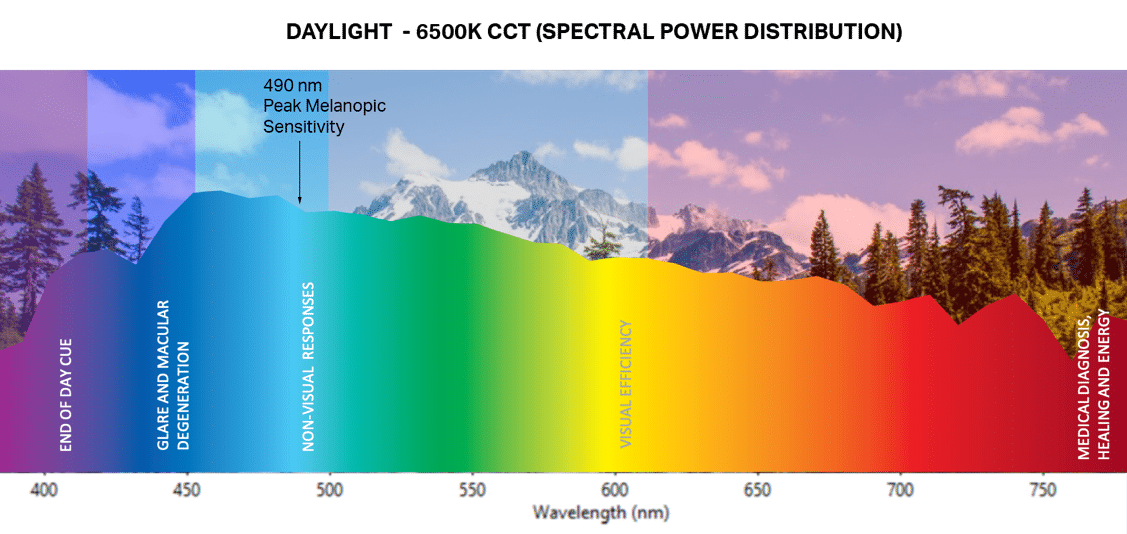
Spectrally optimized white LEDs—such as BIOS SkyBlue—contain this “sky blue” wavelength (490nm for peak circadian sensitivity) in the 2700K-4000K color temperature range that most homeowners as well as facility managers prefer, resulting in a white light providing a high daytime circadian stimulus for improved energy and enhanced concentration. At the same time, this key wavelength can be reduced or removed as needed (either around the time the sun sets or when your work shift ends, to promote better sleep and restful nights) without sacrificing the light quality in any way. This essentially means that there’s no need for color-tuning, color temperature adjustments, or significantly increasing light levels in your home or office in order to address our biological need for a strong day/night signal!
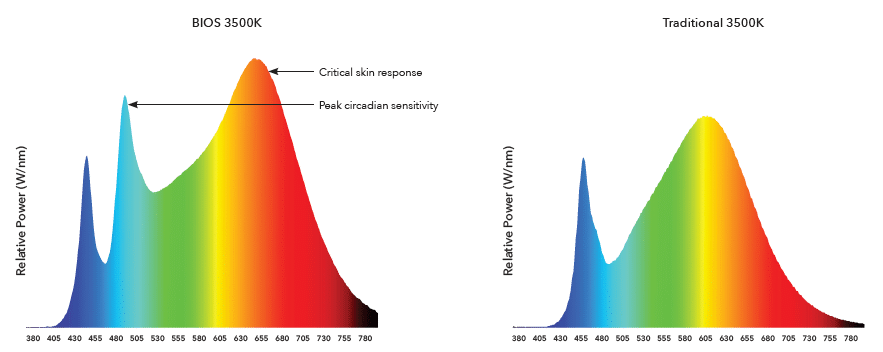
Circadian Lighting and the Modern Workplace
As the correlation between light and health is becoming more widely understood, lighting has become a higher priority for various businesses and industries. Implementing healthier lighting into the workplace can help organizations create healthier environments for workers. Lighting is becoming a critical design component in the modern workplace, with circadian lighting serving as the newest consideration.
Most lighting manufacturers are encouraging the use of color-tunable LEDs to try to increase worker productivity while promoting circadian entrainment in offices; in other words, trying to mimic the color of daylight from sunrise to sunset over the course of a day—by allowing the user to change the hue of the white light from reddish warm, neutral white, and all the way to blueish cool— while adjusting the light intensity. These strategies however result in additional costs and complications to the building owner, while adding negligible circadian value—since virtually all color tuning systems use white LEDs that were designed specifically for vision only and do not contain the critical “sky blue” wavelength for true circadian effectiveness.
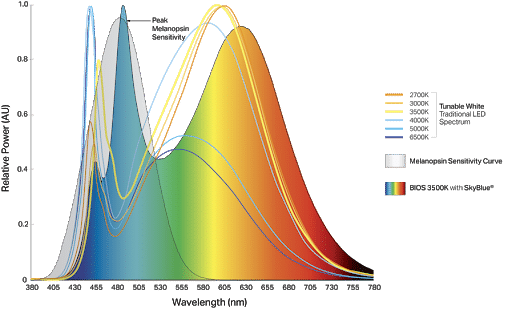
BIOS provides industry-leading spectrally enhanced LED solutions for a wide range of workplace lighting manufacturers, giving designers the tools they need to contribute to satisfying Feature L03 for WELL Building Standard™ v2, which requires “projects to provide users with appropriate exposure to light for maintaining circadian health and aligning the circadian rhythm with the day-night cycle”. This may potentially be achieved in three ways.
- By using more light, which results in:
- Increased glare.
- Increased cost.
- Increased energy consumption.

- By using white light with a much cooler CCT, which results in:
- Not meeting color quality requirements.
- Unhappy tenants.

- By using BIOS SkyBlue LED technology, which results in:
- Meeting color quality requirements.
- The use of desirable CCTs.
- Industry-leading melanopic content.

BIOS SkyBlue circadian lighting technology outperforms all traditional white LEDs on the market, and offers the highest melanopic to photopic lux ratio (m/p ratio) for a given color temperature. BIOS lighting solutions also meet other features within the WELL Light Concept, including color quality, high CRI and R9 values, and visual comfort metrics.
BIOS is pioneering a revolution in healthy light; visit our website to see our Partners who integrate our SkyBlue LED technology in their high-performance luminaires for general, ambient and task lighting in offices, as well as in commercial and institutional spaces—and bring True Circadian Lighting to your workplace today!
Overhead Lighting for Workplaces
Overhead lighting is essential for providing general ambient lighting in larger offices, and in order to promote circadian entrainment, it should ideally be layered with diffused daylight from windows and/or skylights. However, it is not always possible for all workstations in a room to receive an optimal amount of glare-free daylight during the critical “high circadian stimulus” hours of the working day, in which case a carefully designed and spectrally enhanced overhead lighting layout—combined with individual task lighting or table lamps for additional illumination as needed—will ensure a comfortable, energizing and well-lighted office environment.
The lighting design layout should carefully consider both the luminaire spacing and the light intensity distribution, such that an effective amount of light is delivered not only horizontally onto the workstations, but especially vertically onto the eyes to ensure maximum circadian effectiveness.

Image courtesy: Lighting Research Center
Overhead LED lighting can be achieved with recessed, ceiling-mounted (close to the surface) or suspended luminaires—or a combination of all these types. For a higher ceiling, consider suspended pendants with both a direct and indirect distribution, so that light is reflected off the ceiling and onto the walls, increasing the vertical light levels and enhancing the feeling of brightness. In addition, the light output and distribution must ideally ensure that fewer luminaires are required (avoiding a “crowded” ceiling effect) while ensuring uniformity and glare control.
See below for a few examples of how some of the BIOS Partners have incorporated our SkyBlue LED technology into their spectrally optimized overhead LED luminaires in various office spaces, for improved energy and enhanced concentration (without sacrificing aesthetics) during the work day or shift.

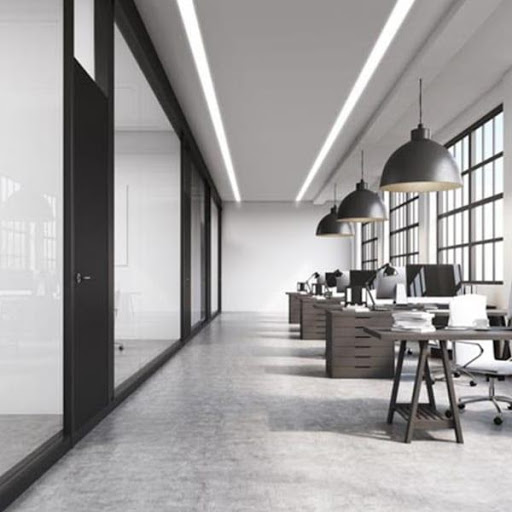
Images courtesy: ALW Lighting (Superplane 2.5 Family – Recessed, Surface, Pendant).

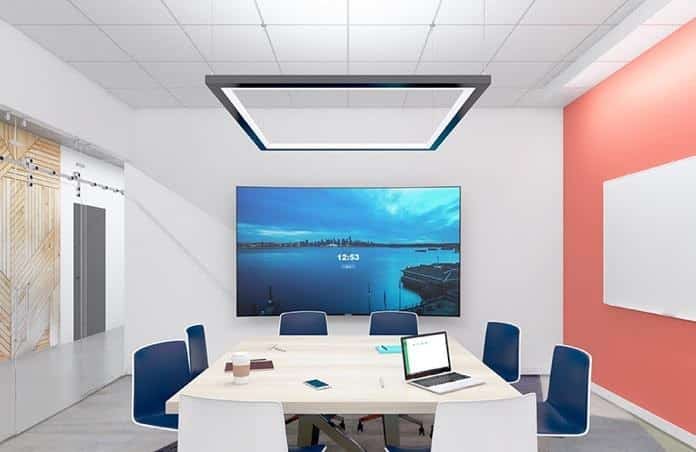
Images courtesy: Axis Lighting; Geometric Recessed (left), SideStep Pendant (right).


Images courtesy: Williams Lighting; SDI5 Suspended Direct/Indirect (left), AT3 Recessed Troffer (right).
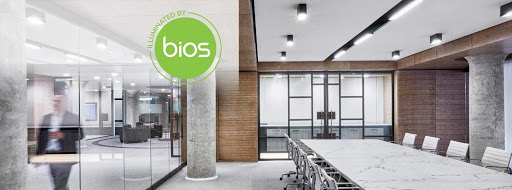
Image courtesy: Pinnacle Lighting.
Task Lighting for Workplaces
As mentioned earlier, the overhead lighting in an office space—even with the addition of diffused daylight—may not always provide enough vertical illuminance to the eye for maximum circadian entrainment during the critical work hours. In that case, it is highly recommended to supplement the ambient lighting with spectrally optimized individual task lighting, such as table lamps or other personal glare-free desktop luminaires.
The BIOS SkyView™ LED table lamp is an excellent example of such a task light, and the first table lamp of its kind—merging beauty and science with BIOS SkyBlue circadian technology. The BIOS SkyView table lamp automatically cycles through sunrise, daytime, sunset, and nighttime modes to provide industry-leading daytime melanopic content for maximum daytime circadian stimulus. During the day (or during your shift), the lamp should be used at full output so that it can provide the daytime light signal our bodies need. At night (or when your shift ends), the table lamp automatically creates a sunset mode that transitions into nighttime mode. This timing is set via an app according to the local solar cycle or can be tailored according to your social demands and sleep requirements.

BIOS SkyView Table Lamp – DAYTIME MODE

BIOS SkyView Table Lamp – NIGHTTIME MODE
Home Office Lighting Design
When it comes to a home office—the need for which can skyrocket during an extended stay-at-home pandemic—unless it is specially designed for that use, most rooms in a residence have minimal ambient electric lighting in the form of overhead or wall-mounted lighting, nor do they have sufficient access to diffused daylighting from windows. Therefore, it is especially important to ensure that one or more task lights are positioned on your workstation, for enhanced vertical illumination at the eye, heightened focus, and reduced eye strain.

The BIOS SkyView™ LED table lamp (mentioned earlier) can be used in home offices also, as a softly glowing yet extremely effective example of a spectrally optimized task light for your remote work or study schedule at home, leading to more productive days and a better night’s sleep.
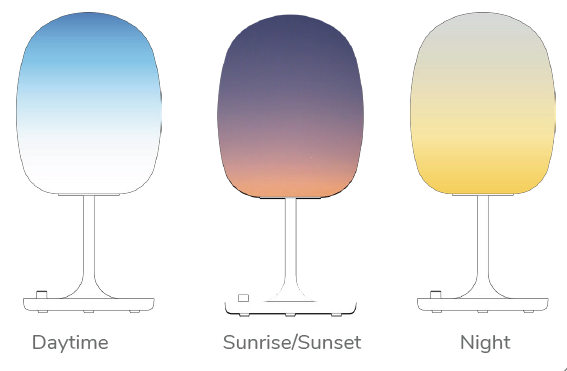
If you prefer a different style for your home office task lights—and if they have standard E26 (medium-base) sockets—another circadian-effective option is to use the BIOS A21 or BR30 retrofit LED bulbs in those fixtures, which infuse your eyes (while avoiding retinal injury) with the critical 490nm sky-blue spectrum during the daytime to increase alertness, improve focus and boost your mood.
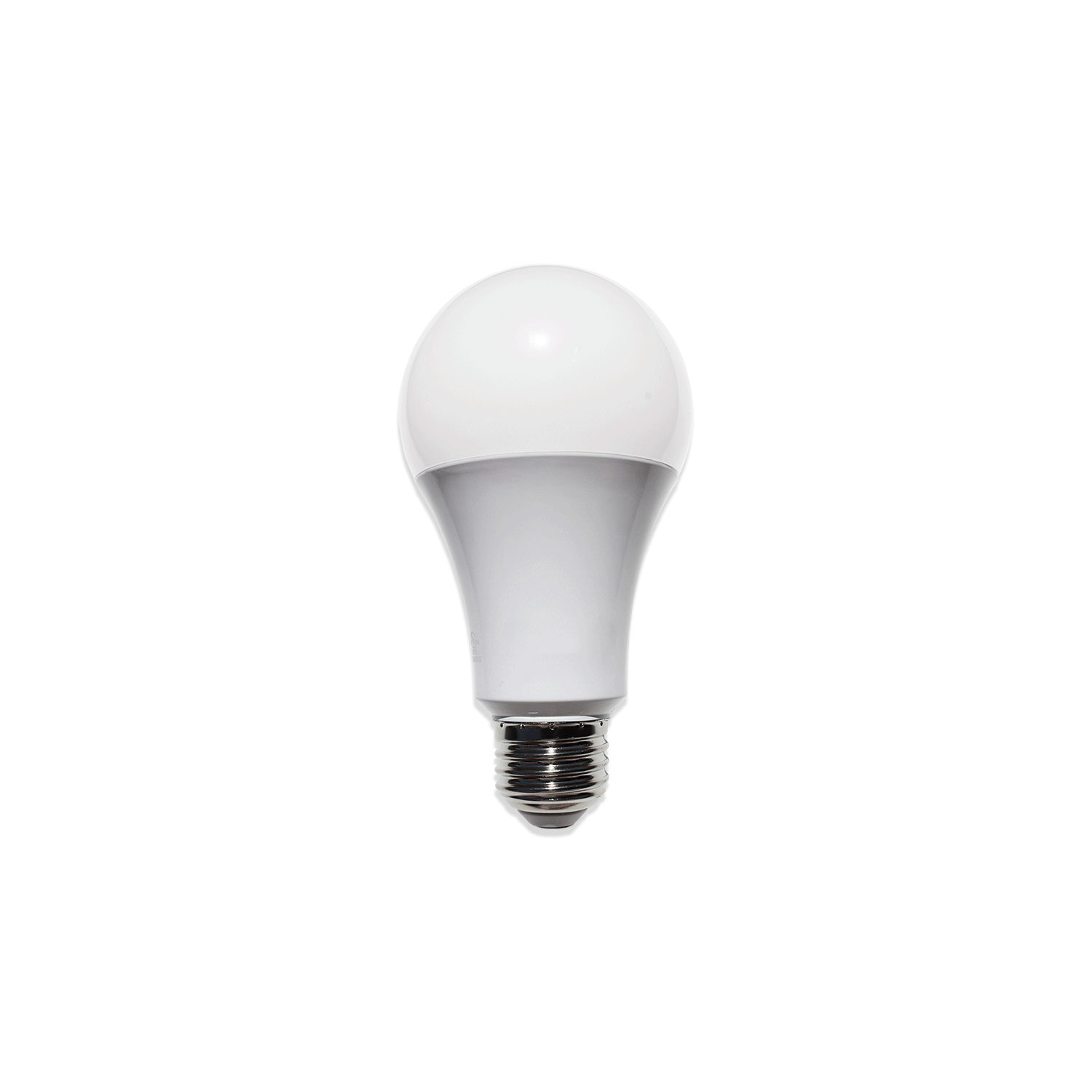
BIOS A21 Retrofit LED Bulb

BIOS BR30 Retrofit LED Bulb
Circadian Lighting Design for Your Home
Your home has always been your sanctuary, and now more than ever you’re spending most of your time inside of it. More time at home however means even more exposure to artificial lighting from lighting fixtures and harsh LED screens. Spectrally enhanced LED lighting solutions (such as those from BIOS SkyBlue) are therefore necessary to entrain your circadian rhythms in your home, as nature intended.
In addition to a home office, BIOS A21 or BR30 LED bulbs can also be used in most of the other spaces in your home—such as in the living and dining areas—in table lamps, floor lamps, and wall-mounted accent lights with standard E26 (medium-base) sockets, to provide a heightened amount of alerting daytime signals during the day. At nighttime or after sunset, these BIOS bulbs are designed to pair with simple dimmers so that they can be dimmed down to remove the sky-blue spectrum, creating a warmer atmosphere that promotes natural melatonin production and better sleep.
The dimmer also has an added benefit of changing the color of the lights, making the whole space feel different from day to night. This ability to delineate day versus night is also important from a mental standpoint. For the best benefits, get a programmable dimmer so that the lights automatically change at the same time each day.
BIOS also offers the Nightfall A21 LED retrofit bulb, which brings the sunset indoors by reducing uplighting by up to 500% and creates a tranquil evening environment conducive to sleep—especially perfect for use in bedrooms. BIOS Nightfall was designed to provide only the nighttime portion of circadian lighting, without any controls necessary for use.
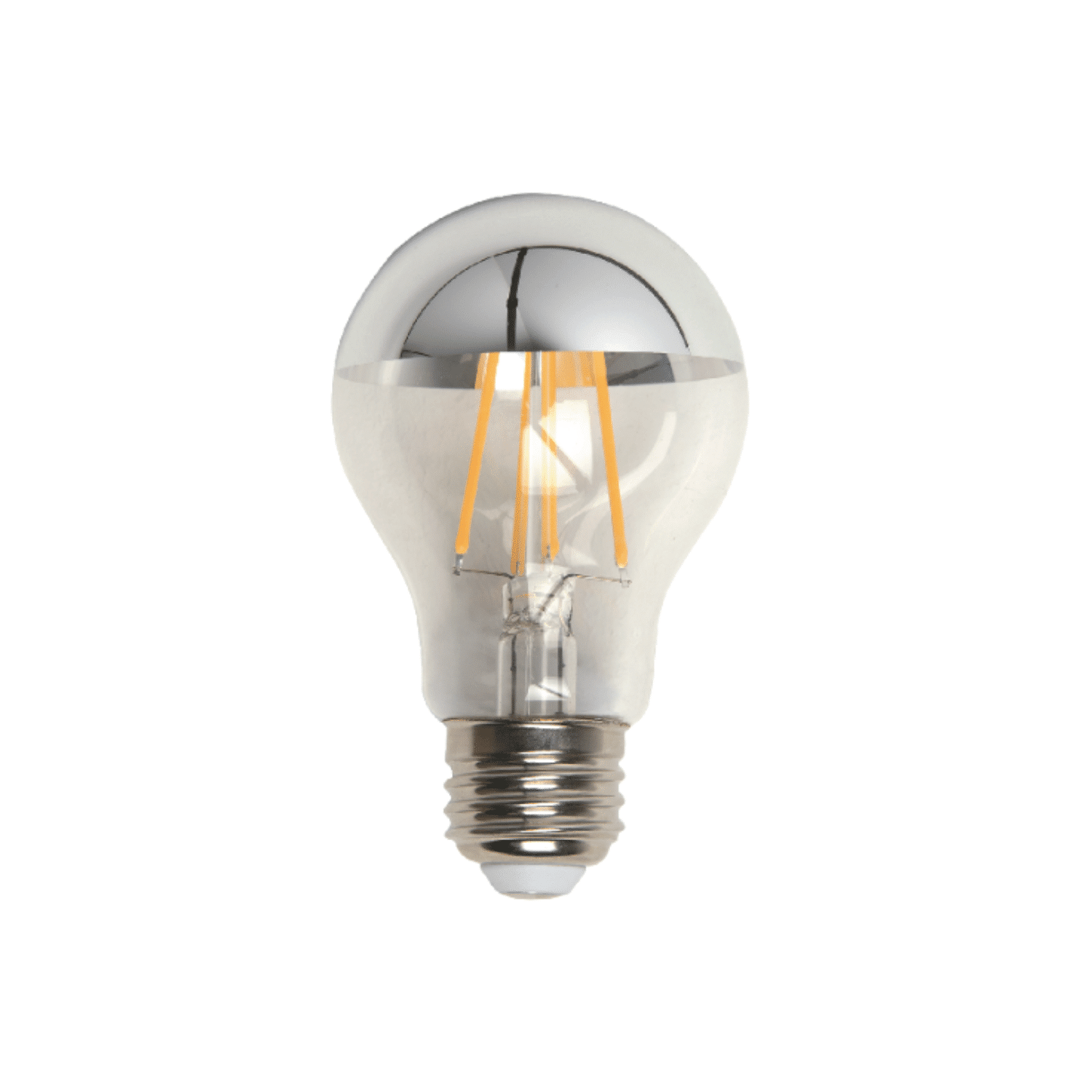
BIOS Nightfall Retrofit LED Bulb
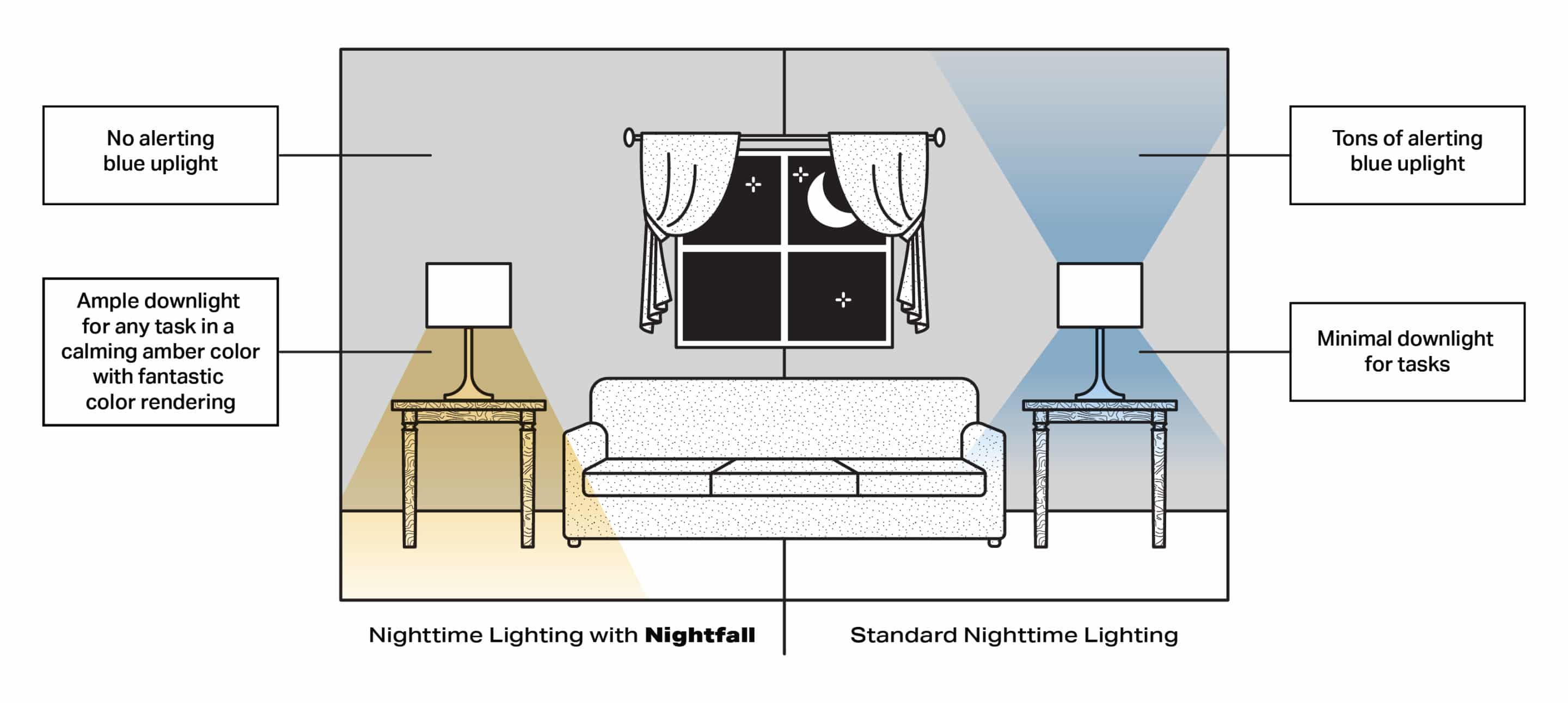
You can avoid dimly lighted areas or excessive glare in your home while also creating interest, by a simple technique known as layering of light which uses a variety of different fixtures—creating a mix of ambient lighting (diffused lighting for general tasks), task lighting (focused/brighter lighting for specific tasks), and accent lighting (for highlighting a specific area, wall, or piece of art/sculpture).
See below for a few examples of light layering that can be achieved in various spaces of a home, using a mix of downlights, floor lamps, table lamps and task lights which can be used with BIOS circadian retrofit LED bulbs for enhanced energy during the day, better sleep at night, and softly glowing illumination at all times.
Want to learn more about how to implement circadian solutions into your home or office lighting project? Visit our website to get in touch with BIOS today!


